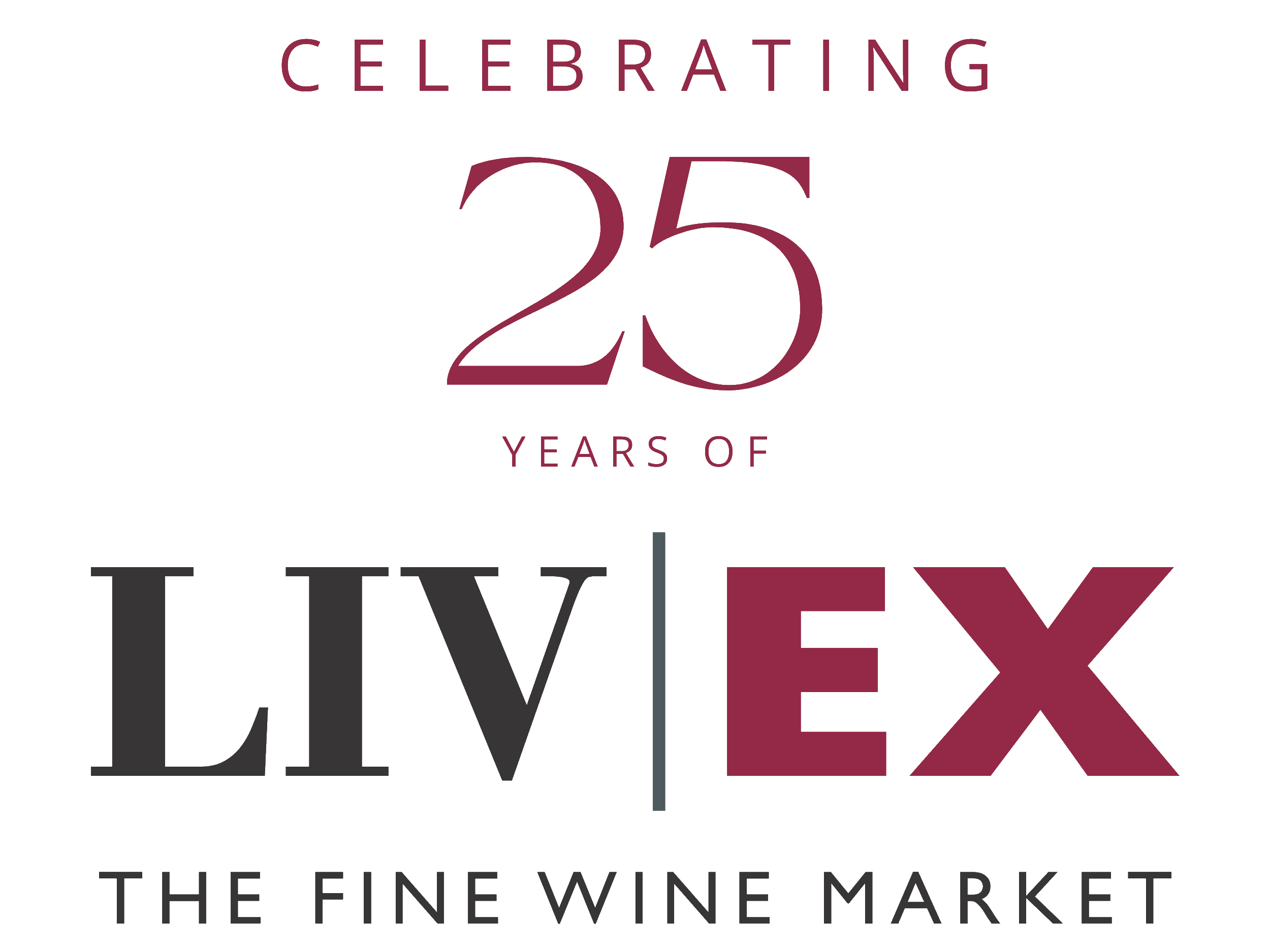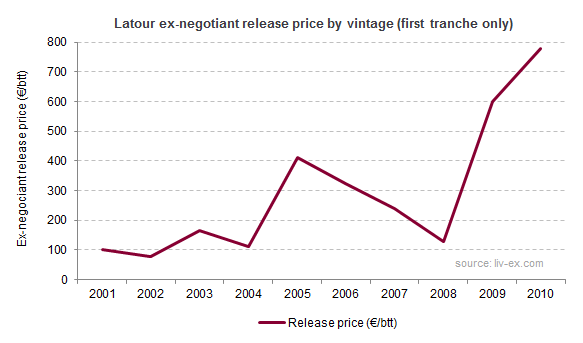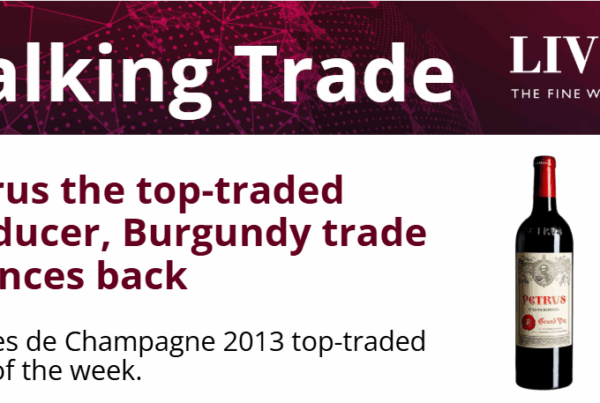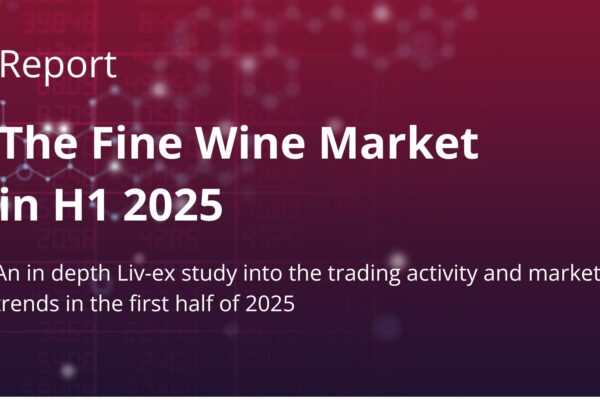In a letter to negociants on 12th April, Frederic Engerer, who runs Latour on behalf of its owner Francois Pinault, explained that 2011 would be the last vintage that both Les Forts de Latour and the grand vin would be sold En Primeur. In future the wines would only be released when the team at the chateau felt that they were ready: seven years after the vintage for Forts and 10 to 12 for Latour itself. This is a major departure from how business has historically been done.
The chateau has obviously been working towards this initiative for some time, having dramatically cut back on the amount of wine it releases En Primeur over the last ten years. The stated reasons were, first, that there was a diminished appetite amongst consumers to buy wines En Primeur and, second, that by controlling the storage themselves, they could guarantee both the provenance and the quality of the wine.
The unstated logic appears to be that this initiative will allow the chateau to keep the difference between the release price and the price of the mature wine for themselves, rather than sharing it with distributors and the consumer. It will also give them greater control over price, supply and who actually buys their wine.
Removing themselves from the En Primeur system completely, however, is a high-risk strategy that has many potential ramifications. Not least because Latour has been one of the system’s biggest beneficiaries, with release prices regularly exceeding €500 per bottle in recent vintages (see chart). It also represents a step away from one of the most positive trends of recent years: increased transparency and openness. This has greatly increased market confidence for the good of all Bordeaux wines.
What has En Primeur ever done for us?
As we have highlighted before, both the En Primeur system and the Place de Bordeaux have many inherent weaknesses. Nevertheless, as a global marketing and distribution machine, it has no peer in the wine trade. For nearly four months each year, the new Bordeaux vintage captivates the imagination of merchants, the press and consumers. No other wine region has the capacity to generate so many emails, tweets and column inches – all at a relatively low cost to the chateaux. Leaving the messy business of marketing, sales and supply-chain logistics in the hands of specialists allows Latour to concentrate on what they do best – making great wine. As Jean-Guillaume Prats of Second Growth Cos d’Estournel explained to the Wine Spectator, “Why would I leave the Place de Bordeaux? It is an extraordinary system. It costs us nothing. The négociants take low commissions while I sell my wine in 30 minutes and the wine is distributed all over the world.”
It is questionable whether any chateau in Bordeaux, even Latour, is big enough to replicate this on its own. Removed of the oxygen, excitement and competition provided by the En Primeur system, there is a very real danger that it will become an expensive curiosity, however good the wines remain. (Think Harlem Globetrotters compared to the New York Knicks.)
Latour’s strategy is undoubtedly influenced by its owners experience in luxury brands. Pinault is the owner of Gucci, amongst other things. Obviously Latour is a luxury, but from a business sense the comparison with Gucci ends there. Luxury brands fulfil an instant consumer need for luxury and prestige; top Bordeaux draws its strength not just from the pleasure its consumers get from drinking it, but also from the confidence that is derived from an active secondary market. Buyers know that, in time, their wines will likely gain value.
From a commercial perspective, even the people at Gucci must look at Latour’s business in awe. Gucci sustains its brand with enormous spending on marketing and advertising, which includes a chain of shops in the most expensive and prestigious locations around the world. Latour’s marketing and distribution costs are as close to zero as is possible in business. Its gross margins exceed 95% (assuming that it is difficult to make a bottle of wine for more than €15-€20 per bottle). Under the new model, Latour will hold at least ten years’ worth of stock. This will require an enormous investment in warehousing, insurance and marketing support. It also carries a very material opportunity cost and additional risks, which have traditionally been spread across many thousands of intermediaries and consumers. Moreover, the benefits of ‘getting to know’ the final consumer are uncertain in fine wine. Many of the drinkers of Latour 2010 probably haven’t been born yet.
Those fine wines that do release when ready to drink – some Champagnes, Riojas and fortified wines – tend to have vast volumes of cheaper wines underpinning the business. They are the detail, not the foundations. At the very least, Latour’s business will generate lower returns than it does today – even if it can sell at higher prices (given the much higher cost and asset base that it will need to sustain). Notwithstanding this, the strategy could backfire.
Reducing air time, transparency and confidence
Merchants, like any intermediary in a free market, tend to be drawn to the products from which they make the most money. This is rational. There are only so many hours in the day and there is only so long that you can keep your customer engaged. Faced with 50 cases of Lafite to sell or a six-pack of Latour, the choice is a simple one. We believe Lafite’s relatively laissez-faire approach to distribution is an important reason for its success in China. Under Latour’s new system, there will be more problems for both merchants and consumers who buy the chateau’s wines.
The knowledge that Latour has 10 years’ worth of stock in its warehouse will not inspire confidence. The market will worry about the overhang that so much mature stock poses to supply. They will also wonder whether Latour is in fact a competitor, rather than a partner, and start second-guessing whether the next release could actually be at a lower price. With a limited history of tastings or transactions to draw upon (and a shorter drinking window), wine merchants and consumers will be understandably more nervous than they are today of paying €500 or maybe €1,000+ per bottle. Moreover, consumers and the trade will be robbed of the experience of monitoring the wine’s development from release and comparing it to its peers on a year-by-year basis. With the chateau itself deciding when to release, Latour’s fans will only ever be able to taste each wine’s summer and autumn – never its spring.
What is most depressing is that the fine wine market has enjoyed so much success from the transparency that the internet has introduced. This is a jump back into the dark.
The price of provenance
The stated aims of releasing wines when they are ready to drink in order to overcome consumers’ lack of interest in En Primeur, and to guarantee provenance, are surely aimed at the Asian market. But in our experience, they don’t ring true.
The unprecedented success of the 2009 and 2010 campaigns, despite eye-watering prices, does not point to a dimming appetite for En Primeur, particularly in top Bordeaux’s biggest market: the UK. The concerns over provenance are valid and continue to vex everybody in the supply chain (Liv-ex included). Nevertheless, considerable resources have and continue to be invested in new bottling and labelling technology, temperature-controlled transport and storage, and other initiatives by producers and distributors alike. We have long been highly sceptical of the ex-chateau premium and have seen little evidence of it in anything other than very old vintages like the 1961. Is storage at the chateaux really so much better than the professional storage provided by reputable merchants around the world? Given the advances in technology and new initiatives already underway, the provenance risk will probably be greatly diminished by the time Latour is ready to sell its 2012 vintage, sometime between 2022 and 2024.
It is easy to point to the difference between the release price of the 1982 (about €20 per bottle) and the current price on Liv-ex (of about €1,700) and calculate how much money Latour could have made if only they had held on. But this is hopelessly simplistic because these price gains did not happen in a vacuum. Would Latour have been as successful historically if it had pursued its current strategy? What if prices don’t appreciate as much in the future? These are big questions. Until they are answered, Latour’s competitors in Bordeaux will be rubbing their hands together with glee. The rest of us are left asking the question, why?




